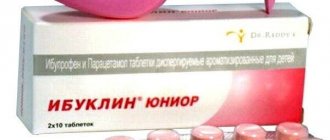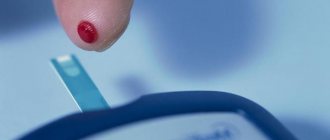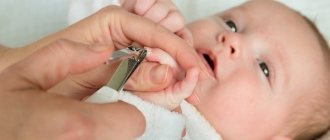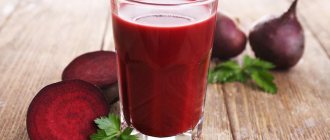Nature of glycine
Glycine, by its chemical nature, is an aliphatic amino acid, namely aminoacetic. It has no optical isomers. The ancient Greek word "glycos", which underlies the name of this amino acid, indicates that it has a sweetish taste. This property makes Glycine especially enjoyable for children.
Glycine is a non-essential amino acid and can be produced in the human liver under certain conditions from precursors: choline, threonine or serine. It is also found in some products of animal and plant origin. Glycine is found in the highest concentrations in beef, liver, nuts, oats, pumpkin and sunflower seeds and other foods. The daily requirement for this amino acid is up to three grams, however, in case of overdose, side effects are extremely rare.
Dosage and duration of use
The dosage of Glycine for children aged 3 years should be prescribed only by a doctor. A patient who has reached this age can already take a dose of a whole tablet. As a rule, doctors prescribe doses 2-3 times a day . The duration of therapy depends on the reason for which the drug is used. But usually the duration is 2 weeks.
Basically, all children at 3 years old can already take the drug correctly, that is, keep the tablet under the tongue until it is completely absorbed. The product has a sweetish taste, so children usually do not refuse to take it.
It happens that a small patient refuses to take the pill. In this case, you can crush it and pour it under your tongue or just into your mouth. It is not recommended to drink Glycine with water. You can also dissolve the pill in a small spoon of boiled water and let your baby drink it.
Under no circumstances should you prescribe treatment with Glycine on your own, despite the fact that it has no contraindications or adverse reactions according to the instructions, with the exception of individual intolerance. If a child or adult shows signs of an allergic reaction, you should see a doctor immediately.
Two routes of glycine in the human body
If glycine enters the human body with food, then, following the gastrointestinal tract, it is transported to the liver, where it is one of the most important participants in the construction of protein molecules. If glycine is taken sublingually, that is, placed under the tongue and dissolved, then instantly entering the bloodstream, it acts on the brain receptors as a mediator. Under the influence of glycine, the production of glutamic acid by neurons is reduced, and the excitation effect is reduced. Neurons begin to produce gamma-aminobutyric acid, or GABA, which produces an inhibitory effect. This puts the metabolism in the body in order, improves the mechanism of inhibition of the central nervous system, reduces psycho-emotional stress and significantly stimulates intellectual performance. These properties perfectly characterize glycine. What it is needed for is described below.
Instructions for use
Children should keep glycine either under the tongue or behind the cheek until completely dissolved. If necessary, it is recommended to first crush the tablet into powder.
You can give the medicine to your child both before and after meals according to the following schemes:
| Diagnosis | Reception schedule | A course of treatment |
| Memory impairment, deviant behavior | 1 tab. twice or thrice a day. You can also take medication in stressful situations. | The course of treatment can vary from 2 weeks. up to 1 month. |
| Sleep disturbance | 50-100 mg per 20 minutes. before going to bed. |
For pathologies of the central nervous system, accompanied by excessive excitability, mood swings, and sleep problems, it is recommended to take the medication as follows:
| Age | Dosage schedule |
| Up to 3 years | 50 mg (0.5 tablets) twice or thrice a day for 1 to 2 weeks. Then you need to drink the drug for another 7 to 10 days, 0.5 tablets. once a day. |
| From 3 years | 1 tab. 2 or 3 times a day for 1-2 weeks. If necessary, the course of treatment can be increased to 1 month. When required, it can be repeated after a month. |
After a stroke, during the first 3-6 hours it is recommended to take 1 g of the drug with 1 tsp. water, then, depending on the patient’s well-being, take the medication in the same doses for 1-5 days, and then 1 or 2 tablets. three times a day for 1 month.
Glycine should be stored in a dark, non-humid place where it cannot be reached by children at temperatures up to 25 degrees for 36 months from the date of release.
Glycine reduces the severity of adverse reactions from anticonvulsants, sleeping pills, antipsychotics, tranquilizers, and antidepressants.
For what purposes is Glycine taken?
Why is Glycine good for children, teenagers and adults? This:
- Natural mild sedative.
- Regulator of normal physiological sleep.
- Helps cope with muscular dystrophy.
- Stimulator of intellectual activity.
- Compensatory element for stressful and emotional overloads.
- Protection of neurons during ischemic stroke.
- Nootropic and anti-stress component in the treatment of alcohol addiction and neurological diseases of the nervous system of various origins in children and adults.
The drug "Glycine" is a tablet for sublingual or transbucal administration. They have a rounded flat cylinder shape with a chamfer. Light marbling may be evident. The main active substance is the amino acid glycine in the form of microcapsules. The tablets also contain additional substances: magnesium stearate and methylcellulose in water-soluble form. In one currency the number of tablets ranges from 10 to 50.
Taking glycine correctly
Although this drug is approved for children of different ages, it must be given strictly in accordance with the dosage. It is imperative to check the body's reaction to glycine.
- For babies under one year of age, the drug is prescribed for insomnia, loudness, and anxiety. The tablet is divided into 4 or 2 parts. It should be given to the child crushed, placing the powder on the inner surface of the cheeks using a plastic spoon or dipping the pacifier into it.
- Children under 3 years old are given half a tablet in the same way.
- Older children are given the whole tablet. You just need to explain to the child that it needs to be dissolved. The sweet taste will allow you to do this without problems.
Attention: the drug is not dissolved in liquid, as it will not be absorbed into the blood and lymph!
At any age, glycine is taken up to 3 times a day for 14 days. The doctor will indicate a more exact time.
Pharmacokinetic effect of "Glycine"
Having a positive effect on metabolic processes in general, “Glycine” normalizes the processes of inhibition of the human nervous system. This, in turn, helps to suppress tense states and enhance performance.

"Glycine" has the ability to block the production of adrenaline, reduce the harmful effects of toxins and free radicals, regulating the activity of glutamate receptors. This allows you to reduce mental and emotional stress, eliminate aggressiveness and conflict, and significantly improve your mood.
"Glycine" can improve sleep patterns and increase intellectual performance. In addition, it has a positive effect on the health of patients with vegetative-vascular dystonia and reduces the degree of brain disorders in patients who have suffered brain injury and stroke. “Glycine” significantly reduces the toxic effects of alcohol and medications that have a depressant effect on the central nervous system.
This amino acid has a good degree of dissolution in tissues and liquids of the human body, but no cumulative effect is noted. Metabolic processes decompose glycine to water and carbon dioxide.
Indications for use
The drug "Glycine", the indications for use of which are very diverse, is widely applicable under the following circumstances:
- A state of stress, increased mental and emotional tension.
- Brain lesions of various origins, accompanied by states of anxiety, restlessness, neuroses, insomnia, and unstable emotional state.
- Reduced level of mental performance.
- Chronic alcoholism and hangover syndrome.
- Deviation in the behavior of children and adolescents.
- Previous ischemic stroke.
Instructions for use of "Glycine"
"Glycine" is applicable for adults and children, but must be prescribed by a doctor.
Adults are prescribed “Glycine” to be taken sublingually (under the tongue) or transbucally (between the upper lip and gum) in tablets with a dosage of 100 mg. The dose and duration of use of the drug depends on the type of disease and is recommended by the doctor.
In case of brain damage of various origins, the drug is prescribed to be taken 3 times a day, 100 mg (one tablet). The duration of treatment is from one to two weeks, depending on the severity of the disease.
For an ischemic stroke, a dose is prescribed according to the following regimen: during the first 3-5 hours you need to take 1000 mg of Glycine, then every day - 1000 mg for five days. After five days, the drug is continued at a dosage of 100-200 mg three times a day for a month.
To treat sleep disorders, take one tablet (100 mg) immediately before bedtime or 20 minutes before bedtime.
When treating chronic alcoholism or to relieve hangover, it is recommended to take “Glycine” at a dosage of 100 mg three times a day for a period of two to four weeks. If necessary, the course of taking the drug can be repeated up to six times a year.
How to use
The dosage of Glycine for children 1 year of age is determined solely by the doctor, as is the duration of treatment. Usually the doctor prescribes 50 g – that’s half a tablet. The baby should take this dose 2-3 times a day for 2 weeks. After this, the intake is continued for another 7 days, but only once a day, 50 g.
Glycine should be kept under the tongue or behind the cheek until it is completely dissolved. If a one-year-old child cannot do this, then you can grind it into powder and put it in the baby’s mouth.
The drug will have its therapeutic effect only if the dosage and duration of therapy are selected correctly. Moreover, parents need to remember that the effect does not appear immediately, but after a certain period of time after taking it. If you give pills irregularly, there will be no positive dynamics. The exception is the quality of sleep, which improves significantly even with this intake of Glycine.
How to give Glycine to children?
For those who are interested in how to give “Glycine” to children, instructions for use are described below.

So, what are the indications for taking the drug? “Glycine” is good as a therapeutic agent for children with brain damage, for improving memory and concentration, for stress and increased psycho-emotional stress. The dosage of the drug and the course of its administration are prescribed by the doctor individually.
To improve memory and improve mental performance, healthy children over three years of age are prescribed Glycine at a dosage of 100 mg (one tablet) three times a day for 2-4 weeks.
In the presence of brain lesions of various origins, the drug is prescribed in the following dosage:
- Children under three years old - 50 mg three times a day for 2 weeks, then 50 mg once a day for one week.
- Children over three years old - 100 mg three times a day with a course duration of one to two weeks.
For infants and children under one year of age, Glycine is prescribed only if there are serious medical reasons. The dosage and duration of the course are determined by the attending physician. Parents should clearly understand that “Glycine” is a drug for children, so its uncontrolled use can cause undesirable consequences. In general, if there are indications for use, “Glycine” (for children) has positive reviews. It has proven itself to be an effective and relatively harmless drug.
Instructions for use and dosage
The tablets must be placed under the tongue and dissolved or dissolved behind the cheek. The duration of use and dosage depend on the reason for use and age.
Babies and infants
At this age, it is prescribed only in serious situations when there are appropriate indications. The dosage and duration are determined solely by the doctor. In this case, the tablet is crushed into powder, divided into equal parts and given up to 3 times a day. The powder is diluted in a small amount of water, formula, breast milk and carefully poured into the mouth, using a syringe (without a needle) on the side surface of the mouth (behind the cheek) so that the baby does not choke.
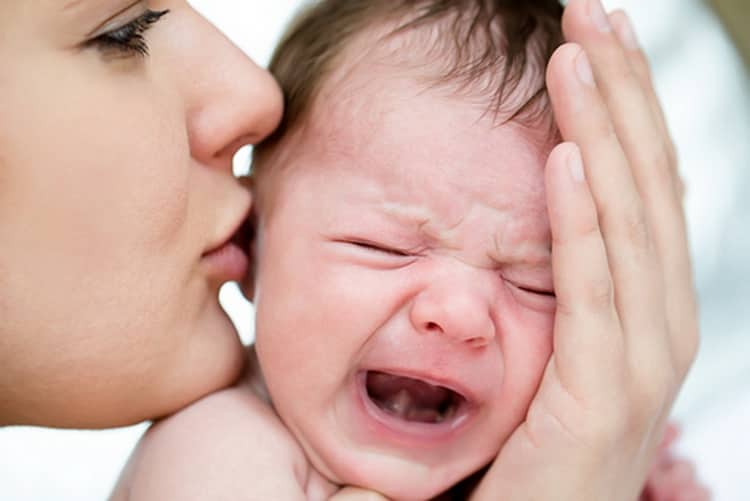
Children 1-2 years old
So, how to give Glycine to a child aged 1-2 years, and what should the dosage be? We find the answer to this question in the instructions, which state that at this age, half a tablet is prescribed up to 3 times a day (daily dose 50 mg). After 2 weeks, the course of treatment is continued for another week, with 50 mg given once a day.
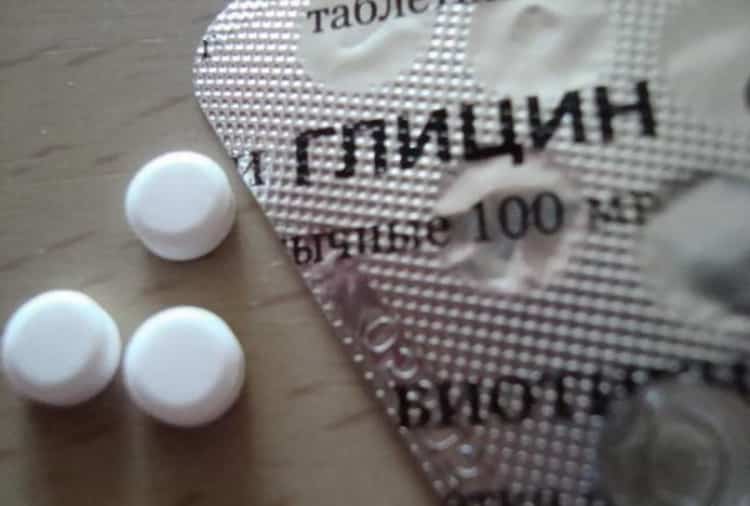
Glycine dosage for children 3-4 years old
At this age, it is often recommended to give the child 1 tablet (100 mg) 2-3 times a day. The duration of therapy can last from 1 to 4 weeks.
For children over 5 years old, the dosage remains the same: 1 tablet 2-3 times a day. The course of treatment ranges from 7 days to 1 month.
Special instructions for the use of "Glycine"
It is worth noting that patients suffering from high or low blood pressure should take Glycine with caution. Taking this drug must be accompanied by monitoring blood pressure levels. If pressure surges in the direction of increasing or decreasing are noted, the dosage of the drug is reduced. If you are taking Glycine, the dosage of which is minimal, but your blood pressure remains unstable, it is better to stop taking the drug. In this case, it is necessary to select a replacement. If Glycine is not suitable, analogues may be a good alternative.
How to take for babies
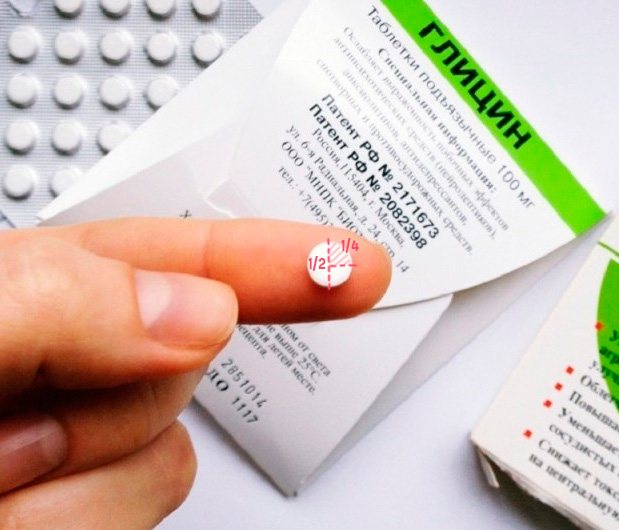
An important role in this matter is played by the age category of the child to whom this drug is prescribed, as well as personal reaction to the medicine and the expected result.
Let's talk about how to give glycine to children.
- For children under one year of age with prolonged sleep disorder, high excitability, and anxious behavior, the doctor usually recommends giving 0.25/0.5 tablets. First you need to crush it, then either dip the pacifier into the powder, or put it under the baby’s tongue and lubricate the baby’s cheeks in the oral cavity.
- to children under 3 years old in the manner described above. There is no need to dilute the resulting powder in water, in which case it will not work and will hardly be absorbed into the blood.
- Children over 8 years old can take 1 tablet of glycine without crushing it. This drug has a sweet taste, so the child will not spit it out or refuse to take it, especially if you offer the tablet in the form of candy.
The number of doses does not depend on age - tablets should be taken 2-3 times a day . The duration of taking this drug is determined only by the doctor, but, as a rule, it is 2 weeks.
Analogues of "Glycine"
The drug has many analogues. Among them are glycine preparations from different manufacturers and various related medications that have similar effects.
The preparation of this amino acid is produced by several pharmaceutical companies and is sold under the trade names: “Glycine Forte Evalar”, “Glycine Bio”, “Glycine Ozone”, “Glycine VIS”. All these drugs contain the main active ingredient - glycine - and additional components. The composition of “Glycine Forte” includes a high concentration of the active substance and B vitamins. “Glycine Bio” has a dual effect: it reduces hyperactivity syndrome and improves brain activity, stimulates attentiveness. “Glycine Bio” has proven itself especially well in terms of use in children. If you are interested in how to give Glycine to children, the instructions for use and doctor's prescriptions will help you.
When talking about “Glycine”, its analogues are difficult to ignore. Among the drugs similar to Glycine are Pantogam Active, Thiocetam, Noopept, Cogitum, Cephabol, Cerebrolysate, Pramistar, Vinpotropil, Sidnocarb, Lucetam, "Pantocalcin" and many others. These drugs have a sedative effect, regulate the functioning of the nervous system, have a beneficial effect on the restoration of brain functions after injuries and lesions of various origins, relieve acute neurotic conditions, and fight neurological diseases. However, almost all of these drugs have a narrow spectrum of action. In comparison, Glycine has minimal side effects and is more versatile.
Dosage
Instructions for use of Glycine for children 5 years old clearly indicate that the dosage at this age should be 1 tablet two to three times a day. If sleep disorders are observed, then you need to take the pill 20 minutes before. In any case, you can take the drug only with the permission of your doctor.
Self-administration of the medicine is not recommended, although it does not harm the baby’s health . The duration of the course of therapy is usually half a month. The exact period is prescribed by the doctor based on what problem is detected in the patient.
You need to take Glycine correctly. The tablet must be placed under the tongue and kept there until it is completely dissolved. For five-year-old children this is no longer difficult. Moreover, the pill has a sweet taste, so patients find it pleasant to take.
Reviews
Doctors around the world give positive reviews about Glycine, noting its high effectiveness and relative harmlessness. Doctors are in a hurry to warn their patients that Glycine is a medicinal drug, therefore it must be taken as directed by the doctor. The dosage and duration of the course of taking the drug are also determined by a specialist.
On various forums you can find numerous reviews of people who have in one way or another encountered the use of Glycine. It should be noted that the vast majority note the positive effect of this drug on human health. Those parents who bought “Glycine” for children also leave reviews in a positive way. Moreover, there are quite a lot of such responses. Parents note that after they began to use “Glycine” for children, their children’s anxiety decreased, muscle tone normalized, sleep improved, and mental processes, including concentration and memory, became more active. Among the negative reviews there are complaints about the uselessness of the medicine, the presence of an allergic reaction and individual intolerance. But in terms of the number of side effects, Glycine can be considered the safest remedy. Along with its high efficiency and low price, the safety of “Glycine” makes it one of the most popular drugs among its analogues.
Glycine: at what age can it be given to children?
At what age can children take glycine? Due to the fact that aminoacetic acid is a natural substance for the body, if indicated, glycine is prescribed to children, starting from infancy. The answer to the question whether the drug can be given immediately after birth depends on how serious the diagnosis is.
As a rule, doctors prescribe the drug when the child is 28 days old or older. In any case, for at least three years, the use of the drug should be carried out under the supervision of a doctor.
Important! When purchasing a substance for children at a pharmacy, it is necessary to take into account the dosage of the medicine. A dosage of 200 mg for children is excessive, so preference should be given to a drug with 100 mg of active ingredient per tablet. Tablets with a separator that allow you to dose the medication are preferable.
Depending on the age of the child and the purpose of the prescription, the amount of the drug and the duration of the course of its use vary.
For children under 6 months, glycine is usually prescribed in a reduced dosage - 0.25 mg (tablet divided into quarters), less often - 50 mg (tablet divided into halves). The course is developed individually, depending on the diagnosis that necessitated taking the drug.
The standard course of use lasts 1 week twice a day, and in some cases it is extended for another week (1 time/day). For children from six months to one year, the dosage is increased to 50 mg with a similar dosage regimen.
For children aged 1 year, the dosage is 50 mg. The drug is taken three times a day for 2 weeks. The course can be extended for another 1 week with a dose (1 time/day). At 2 years, a similar scheme is applied.
At 3 years of age, the dosage of the drug increases to 100 mg per dose. Starting at this age, courses of use of the substance can be prescribed in two directions:
- For the treatment of memory disorders, mental and mental retardation. The course of treatment lasts 2 weeks with the possibility of extension up to 4 with a frequency of 2 or 3 times a day;
- With increased arousal, hyperactivity and sleep disturbances. The drug is used 2 or 3 times for 1-2 weeks.
At 4 years, 5 years, 6 years and 7 years, significant changes in the dosage regimen can only be made in special cases and on an individual basis.
When treating sleep disorders, it should be taken into account that the last dose of glycine should be 20 minutes before putting your beloved child to bed.
